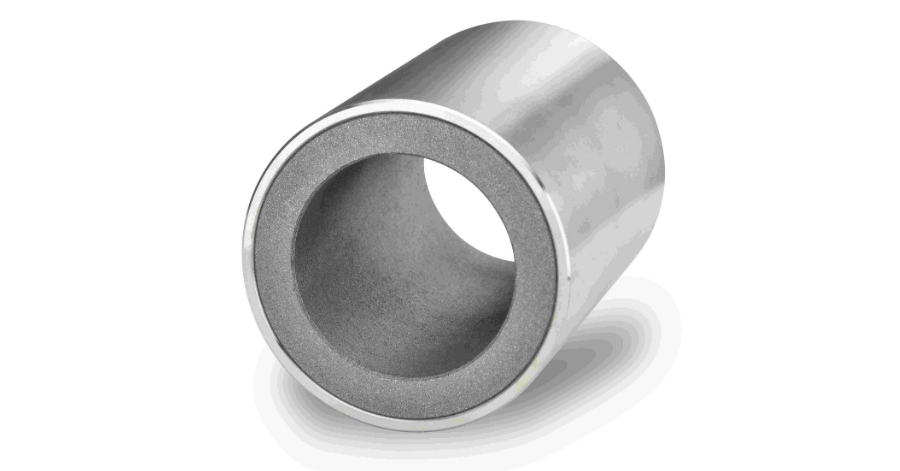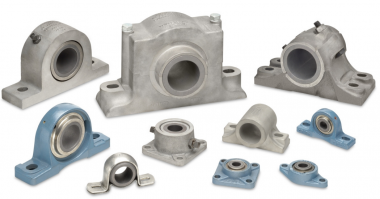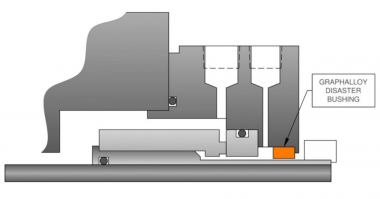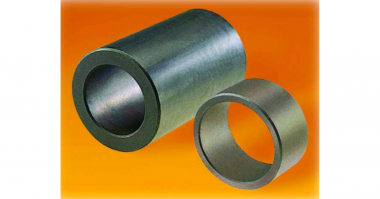The materials are able to withstand dry-run conditions.
Sometimes saving money can be expensive. Ads showing that an appliance is more energy-efficient than its competition can be convincing, but perhaps spending $800 on a new refrigerator would only save $10 a year. The problem is not limited to consumer goods. Selecting the wrong replacement parts for industrial equipment can also prove to be costly. One Midwest refinery encountered this issue when it replaced the original graphite-metal alloy bearings on two butane cavern pumps with bronze bearings. While the original bearings lasted almost a quarter of a century, the new bronze bearings failed within four years. Just the labor to remove the pump ended up costing far more than purchasing higher-quality bearings would have.
Limestone Cavern
The refinery was built in the early 1900s. Over the past century, it has undergone extensive reconfiguration and expansion. It can process 125,000 barrels per day (bpd) of sweet or sour crude. Four hundred feet beneath the refinery lies a limestone cavern used for butane storage.
In 1980, the plant purchased a pair of 13-stage, deep-well cavern pumps to move product out of the cavern. Designed to fit on the existing 16-inch, 300-pound flanges with mechanical seals and rigid flange couplings, the pumps came with 408 feet of column and stainless- steel shafting. Originally, they were designed to pump 350 gallons per minute of propane, but this later changed to butane. Although butane is slightly heavier—with a specific gravity of 0.58 versus propane’s 0.51—it was well within pump specifications. The equipment was also designed to pump water if it infiltrated the cavern. The pumps operate one at a time in a balanced mode so that they have the same number of operating hours, rather than operating as the primary and the other as a standby.
Both pumps were initially fitted with self-lubricating graphite-metal alloy composite bearings. These composites consist of a metal impregnated into a graphite substrate under high temperature and pressure. This process gives the material its strength. Such components can be manufactured with tighter-than-normal clearances. Any wear or contact exposes the graphite, providing a low-friction surface. Depending on the intended use, these composites can be made using metal alloys including Babbitt, bronze, copper, iron, nickel and silver. The graphite does not have a melting point and does not soften at high temperatures, so it can be used in non-oxidizing temperatures up to 1,000 F (538 C) and up to 750 F (400 C) in air. It does not get brittle at temperatures as low as minus 450 F (minus 268 C).
The original graphite-metal alloy bearings lasted from initial installation in 1980 until 2004. However, the pump original equipment manufacturer (OEM) recommended using bronze as replacement bearings, which was a less expensive option. In many instances, it makes sense to go with the lower-cost bearings. However, this was not one of those times. While bronze performs well under normal operating conditions when moving product, it does not do well during dry-run conditions. The problem is one of lubricity.
In these deep-well pumps, the product lubricates the bushings on its way up and out of the pump. During startup, the pump has to run dry for 10 to 15 seconds before product is moved to the top of the pump. Because bronze is not self-lubricating or non-galling, the pumps would seize during this time, and the bearings needed to be replaced after an average of just nine months.
With an above-ground pump, repairs might be fairly straightforward. That was not the case with these cavern pumps. To repair them, technicians had to pull each pump out of the ground, one 10-foot section at a time, and disassemble it along the way. Forty bearings needed replacement, one for each section. Each pump then had to be assembled and lowered, section by section, before it could be put back into service. The cost of doing this just one time was more than 20 times the cost differential between the self-lubricating bearings and the bronze bearings.
When engineers with experience at this plant returned to work at the refinery, they observed the situation and recommended the plant return to the approach that had worked before. In this case, it was an easy financial decision now that replacement labor costs were well-known.
The first pump had its bronze line shaft bearings and bowl bushings replaced with graphite-Babbitt grade bearings. Five years later, both pumps continue to operate without issue, allowing maintenance personnel to put time and budget toward improving other aspects of the refinery.
Beyond Cavern Bearings
Bronze or other materials with short dry-run capabilities are a good fit in some situations, but not for vertical pumps operating under possible dry-run conditions, especially with low specific gravity fluids. These vertical pumps are not limited to hydrocarbons or refinery operations. They are also used in potable water service in places that require deep-well pumps.
Twenty years ago, pump operators would install a food-grade bearing grease drip system that an operator could turn on five or 10 minutes before startup that would ensure bearings were lubricated all the way down the shaft. Now regulators do not allow anything to be introduced into these water wells. As a result, some operators have switched to graphite-metal alloy bearings that can withstand these startup conditions.
About the author:
Eric Ford is vice president of Graphite Metallizing Corp., a maker of graphite- metal alloy materials under the Graphalloy brand name. He may be reached at eric.ford@graphalloy.com. For more information, visit graphalloy.com.
Originally Published in Pumps & Systems.
Read more about Graphalloy’s bearings.





Comments